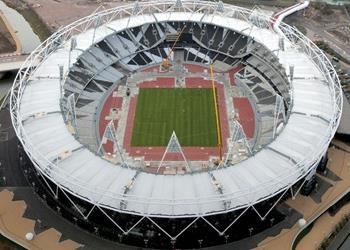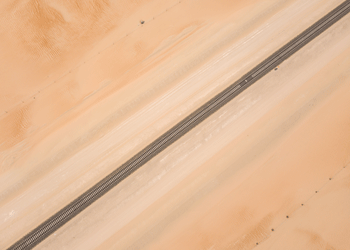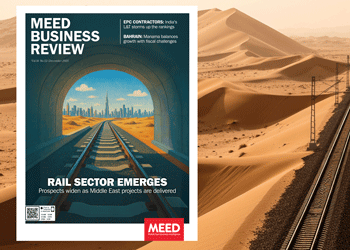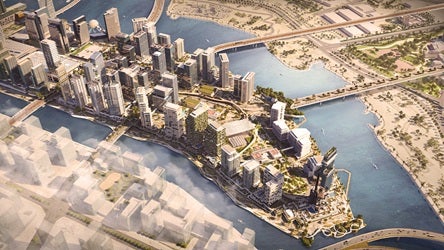Stakeholders hope Kuwait can execute spending plans
11 August 2023
 This month’s special report on Kuwait also includes:
This month’s special report on Kuwait also includes:
> ENERGY: Kuwait's $300bn energy target is a big test
> BANKING: Kuwaiti banks enter bounce-back mode
> INTERVIEW: Kuwait’s Gulf Centre United sets course for expansion

Contractors in Kuwait hope that the country’s recently appointed cabinet will be able to execute spending plans without descending into political infighting.
Earlier this month, Kuwait’s National Assembly passed the 2023/24 budget, projecting the largest year of spending in the country’s history.
The budget projects spending at KD26.2bn ($85.2bn) and revenues at KD19.4bn, with a projected deficit of KD6.8bn. After the vote, the Assembly closed for its summer break to return in late October.
Speaking to lawmakers after the budget was approved, Prime Minister Sheikh Ahmad al-Nawaf al-Sabah thanked them for their cooperation and called for more collaboration in the next term when they return.
Key projects
Joint action by the country’s politicians will be vital in executing spending plans and pushing through strategic infrastructure projects.
In July, Kuwait’s government submitted a four-year programme for major infrastructure projects to the National Assembly. The programme included 107 projects to be completed through to 2027.
Among the projects are Kuwait’s section of the GCC Railway project and Kuwait International airport’s Terminal 2, which is expected to increase the capacity for flights in and out of the country from 240,000 to 650,000 by building three new runways.
Other key projects included in the programme are a scheme to repair thousands of kilometres of roads and the long-delayed Mubarak al-Kabeer port expansion.
The container harbour on Boubiyan Island faces Iraq and is anticipated to have a capacity of 8.1 million containers when completed.
If all the oil and gas projects in the programme are executed as planned, the country’s oil production capacity will increase from 2.7 million barrels a day (b/d) to 3.15 million b/d.
At the same time, natural gas production will be increased from 521 million cubic feet a day (cf/d) to 930 million cf/d.
Inadequate spending
The programme could have significant economic benefits for Kuwait. However, many contractors within the country remain pessimistic about the chances of the plans being fulfilled.
In May this year, official figures issued by government agencies revealed a worryingly low level of government spending on development projects despite large budgets being allocated.
During the 2022/23 fiscal year, only KD470m was spent despite KD1.3bn being allocated for projects.
The expenditure rate of only 36 per cent for the 2022/23 fiscal year has sparked concerns that the recently announced spending plans for the next four years are also likely to fail to hit targets.
Unpredictable policies
Kuwait’s low expenditure rate was mainly driven by political gridlock that has stopped the government from making key decisions and giving the essential approvals needed to execute projects.
Kuwait has had three elections in three years, creating policy uncertainty that has significantly impacted businesses and progress on policy issues.
Due to the political gridlock, major contract awards have been scarce in Kuwait over recent years and dozens of businesses have been forced to take drastic action.
With so few major new contract awards, some international contractors have reduced staff levels in Kuwait, and many domestic businesses have started seeking work overseas in Saudi Arabia, Oman and Qatar.
The government is very worried about potential electricity blackouts if one of the country’s power stations cannot operate for any reason
Power prioritised
While contract awards remain far below historic highs, a number of significant awards in the power and water sector in the first quarter of this year have increased optimism for some stakeholders.
The value of awarded projects in Kuwait for the first three months was KD527m ($1.7bn), more than four times as much as the same quarter the previous year.
This was mainly driven by activity in the power sector, which rose to its highest level in almost six years, according to the National Bank of Kuwait (NBK).
The jump in spending on the power sector came as the government tried to fend off possible electricity shortages.
One source said: “This was a form of emergency spending as the government is very worried about potential electricity blackouts if one of the country’s power stations cannot operate for any reason.”
A sector where major contract awards have remained very low is oil and gas, something that has worried analysts as Kuwait relies on this sector for more than 90 per cent of its revenues.
True test
In June, the prime minister named the country’s fifth cabinet in less than a year. The latest 15-person cabinet retained the prime minister and nine ministers from the previous cabinet in their old posts.
The new cabinet’s similarities with the last cabinet have fuelled concerns that it will be plagued by similar problems when it comes to pushing through spending plans.
However, the slight changes made have shifted the balance of the cabinet in a way that favours cooperation with the parliament, according to some contractors.
If cooperation can be fostered and we see a period where the government approves major projects, it could be transformational for the country.
Ultimately, the true test of whether Kuwait’s policymakers can work together to push through approvals for projects will come when they return to work after their summer break.
Exclusive from Meed
-
 Riyadh prepares Qiddiya National Athletics Stadium tender
Riyadh prepares Qiddiya National Athletics Stadium tender9 December 2025
-
 Saudi Arabia and Qatar sign high-speed rail link agreement
Saudi Arabia and Qatar sign high-speed rail link agreement9 December 2025
-
 Oman green hydrogen projects cancelled
Oman green hydrogen projects cancelled8 December 2025
-
 Regional rail industry emerges
Regional rail industry emerges8 December 2025
-
 Aldar and Mubadala plan $16bn financial district expansion
Aldar and Mubadala plan $16bn financial district expansion8 December 2025
All of this is only 1% of what MEED.com has to offer
Subscribe now and unlock all the 153,671 articles on MEED.com
- All the latest news, data, and market intelligence across MENA at your fingerprints
- First-hand updates and inside information on projects, clients and competitors that matter to you
- 20 years' archive of information, data, and news for you to access at your convenience
- Strategize to succeed and minimise risks with timely analysis of current and future market trends

Related Articles
-
 Riyadh prepares Qiddiya National Athletics Stadium tender
Riyadh prepares Qiddiya National Athletics Stadium tender9 December 2025

Saudi gigaproject developer Qiddiya Investment Company (QIC) is expected to float a tender soon for the construction of the estimated SR7bn ($1.8bn) National Athletics Stadium at its Qiddiya entertainment city development.
MEED understands that the prequalification process has reached an advanced stage and the tender for the main contract is likely to be issued within a few weeks.
The multipurpose stadium will cover an area of approximately 182,000 square metres and its design is inspired by the London Olympic Stadium.
In September, MEED exclusively reported that QIC had begun the procurement process for the kingdom’s next major sporting destination, having received expressions of interest from contractors for the project.
UK-based HOK is the project’s lead design consultant. It is supported by Canadian engineering firm WSP and Germany’s Schlaich Bergermann Partner.
UK-headquartered WT Partnership is serving as the project’s cost consultant.
The stadium will be located within the Qiddiya Sports Park cluster and is expected to be completed by 2030.
In December 2020, Saudi Arabia was selected to host the 2034 Asian Games. The 22nd edition of the event will be held in Riyadh from 29 November to 14 December 2034.
Saudi Arabia is also set to host the Asian Winter Games in 2029. In October 2022, the Trojena development at Neom, in the northwest of the country, was selected to host the ninth edition of the event.
The National Athletics Stadium is one of several major projects within the wider Qiddiya development. Others include an e-games arena, Prince Mohammed Bin Salman Stadium, a performing arts centre, a motorsports track, Dragon Ball and Six Flags theme parks and Aquarabia waterpark.
The project is a key part of Riyadh’s strategy to boost leisure tourism in the kingdom. According to UK analytics firm GlobalData, leisure tourism in Saudi Arabia has experienced significant growth in recent years.
Domestic leisure tourism trips increased to 33.76 million in 2023, up from 16.74 million in 2018. International tourist arrivals for recreational purposes increased by 600% from 2018 to 2023.
Image: Buro Happold
 READ THE DECEMBER 2025 MEED BUSINESS REVIEW – click here to view PDF
READ THE DECEMBER 2025 MEED BUSINESS REVIEW – click here to view PDFProspects widen as Middle East rail projects are delivered; India’s L&T storms up MEED’s EPC contractor ranking; Manama balances growth with fiscal challenges
Distributed to senior decision-makers in the region and around the world, the December 2025 edition of MEED Business Review includes:
> AGENDA 1: Regional rail construction surges ahead> INDUSTRY REPORT 1: Larsen & Toubro climbs EPC contractor ranking> INDUSTRY REPORT 2: Chinese firms expand oil and gas presence> CONSTRUCTION: Aramco Stadium races towards completion> RENEWABLES: UAE moves ahead with $6bn solar and storage project> INTERVIEW: Engie pivots towards renewables projects> BAHRAIN MARKET FOCUS: Manama pursues reform amid strainTo see previous issues of MEED Business Review, please click herehttps://image.digitalinsightresearch.in/uploads/NewsArticle/15217660/main.jpg -
 Saudi Arabia and Qatar sign high-speed rail link agreement
Saudi Arabia and Qatar sign high-speed rail link agreement9 December 2025
Saudi Arabia and Qatar have signed an agreement to build a proposed high-speed rail line connecting Riyadh and Doha.
The agreement was signed by Saudi Arabia's Transport & Logistics Services Minister, Saleh Al-Jasser, and Qatar's Transport Minister, Sheikh Mohammed Bin Abdulla Bin Mohammed Al-Thani.
The high-speed railway line will cover 785 kilometres (km) and will pass through Hofuf and Dammam, while also linking King Salman International airport and Hamad International airport.
The train's speed will exceed 300 kilometres an hour, reducing travel time between the two capitals to about two hours.
The project is slated for completion in six years. The project is expected to serve over 10 million passengers annually and create more than 30,000 direct and indirect jobs.
Riyadh and Doha relaunched a proposed rail link connecting the two countries in 2022, after agreeing to set a date to begin studying the connection.
In July of that year, France’s Systra was selected to conduct a feasibility study on the proposed scheme, as MEED reported.
A rail link connecting Saudi Arabia and Qatar was planned before the diplomatic dispute that froze relations between Riyadh and Doha from 2017 until the Al-Ula Declaration was signed in January 2021.
In 2016, Qatar Railways Company (Qatar Rail) was planning to tender the design-and-build contract for the construction of regional railways in Qatar, including the link connecting to the Saudi border.
 READ THE DECEMBER 2025 MEED BUSINESS REVIEW – click here to view PDF
READ THE DECEMBER 2025 MEED BUSINESS REVIEW – click here to view PDFProspects widen as Middle East rail projects are delivered; India’s L&T storms up MEED’s EPC contractor ranking; Manama balances growth with fiscal challenges
Distributed to senior decision-makers in the region and around the world, the December 2025 edition of MEED Business Review includes:
> AGENDA 1: Regional rail construction surges ahead> INDUSTRY REPORT 1: Larsen & Toubro climbs EPC contractor ranking> INDUSTRY REPORT 2: Chinese firms expand oil and gas presence> CONSTRUCTION: Aramco Stadium races towards completion> RENEWABLES: UAE moves ahead with $6bn solar and storage project> INTERVIEW: Engie pivots towards renewables projects> BAHRAIN MARKET FOCUS: Manama pursues reform amid strainTo see previous issues of MEED Business Review, please click herehttps://image.digitalinsightresearch.in/uploads/NewsArticle/15217463/main.gif -
 Oman green hydrogen projects cancelled
Oman green hydrogen projects cancelled8 December 2025
Hydrogen Oman (Hydrom), France’s Engie and South Korea’s Pohang Iron & Steel Company (Posco) have cancelled plans to move forward with the $6.7bn HyDuqm green hydrogen project.
In a joint statement, the firms said they had reached a decision to end the scheme by mutual consent following an “in-depth assessment” of global renewable hydrogen offtake dynamics and investment frameworks.
The HyDuqm scheme was one of the largest green hydrogen projects awarded under Oman’s first auction round in 2023.
The proposed development included around 5GW of combined solar and wind capacity, supported by battery energy storage, to power an electrolysis plant producing hydrogen for conversion into green ammonia.
The facility was expected to deliver up to 1.2 million tonnes of green ammonia a year by 2030, with Posco as the main offtaker to support the decarbonisation of its steel operations.
The consortium, led by Posco (28%) and Engie (25%), had secured a 47-year concession with the state-owned Hydrom to develop a 320-square-kilometre site near the Port of Duqm.
Samsung Engineering, Korea Southern Power and Korea East-West Power had a 12% stake, with Thailand’s PTTEP holding the remaining 11%.
As recently as May, the partners were still targeting a final investment decision in 2027, subject to detailed economic and technical feasibility assessments.
Separately, a second Hydrogen project in the same area, owned by the UK’s BP, has also been cancelled. BP withdrew its plans for the Duqm green hydrogen project, which had secured land rights for the 1.5GW facility.
Hydrom managing director, Abdulaziz Al-Shidhani, told the 2025 Green Hydrogen Summit in Oman last week that only seven of the nine original projects that won land tenders were progressing.
Wider slowdown
The cancellations come amid a broader slowdown in green hydrogen development globally. Several major schemes have been postponed, scaled back or withdrawn as project economics have tightened.
In Europe, more than one-fifth of planned hydrogen projects had been stalled or cancelled by the end of 2024, according to research and consultancy firm Westwood Global Energy, largely due to high costs, uncertain demand and slow progress securing long-term offtake.
A similar trend has emerged in the GCC, where Saudi Arabia’s flagship Neom green hydrogen project has also faced offtake and market pressures despite reaching an $8.4bn financial close in 2023.
The 4GW scheme, designed to produce about 1.2 million tonnes a year of green ammonia, has reportedly struggled to secure multiple international buyers, with only limited offtake confirmed to date.
Hydrogen production costs
Global green hydrogen production costs also remain significantly higher than conventional alternatives, typically in the range of $3-$8 a kilogram compared with roughly $0.5-$2/kg for hydrogen produced from fossil fuels, leaving large export-oriented projects exposed to pricing and demand uncertainty.
The combination of elevated capital costs, slow offtake development and evolving policy frameworks has created headwinds for investment decisions across the sector.
In the joint statement, however, Hydrom said it is committed to “developing a competitive hydrogen-centric economy” aligned with Oman’s Vision 2040.
It added that projects awarded in the first two auction rounds are progressing on schedule towards the country’s target of producing more than one million tonnes a year of green hydrogen by 2030.
The company also highlighted continued international interest in the sector, noting that the third auction round is under way with strong foreign participation.
https://image.digitalinsightresearch.in/uploads/NewsArticle/15214080/main.jpg -
 Regional rail industry emerges
Regional rail industry emerges8 December 2025
 Commentary
Commentary
Colin Foreman
EditorRead the December issue of MEED Business Review
The GCC is experiencing a fundamental shift in its approach to rail infrastructure, as it moves from standalone projects to a self-sustaining regional industry. The transition is evident as local, national and regional projects advance across the region.
The first wave of metro systems, in Dubai, Doha, and most recently, Riyadh, have reported stronger-than-expected ridership and demonstrated the viability of mass transit in the Gulf.
Extensions to those networks are planned or under way, including Dubai’s Blue and Gold lines and Riyadh’s Line 2, alongside planned metros elsewhere such as Muscat and Bahrain.
Projects are also planned and already being delivered at the national level. The UAE’s Etihad Rail and Saudi Arabian Railways are leading most of these efforts. The region’s first cross-border project is also progressing with the Hafeet Rail scheme linking the UAE and Oman.
Other cross-border schemes are planned, including high speed links connecting Riyadh with Doha and Kuwait City, and rail links for Bahrain across causeways to Saudi Arabia and Qatar. The ultimate ambition is a GCC Rail network – a project that was reinvigorated by the Al-Ula accords in 2021.
Sustained, simultaneous activity across the GCC is fostering the development of an indigenous regional rail industry. Rather than being executed as isolated endeavours, projects are creating ongoing demand for expertise, personnel and resources within the region.
Project delivery capability will be complemented by the establishment of crucial ancillary services, including fabrication and servicing facilities.
These operations will shift the GCC from a lucrative market for international contractors to a regional hub for the rail industry, capable of servicing and sustaining its growing network.
 READ THE DECEMBER 2025 MEED BUSINESS REVIEW – click here to view PDF
READ THE DECEMBER 2025 MEED BUSINESS REVIEW – click here to view PDFProspects widen as Middle East rail projects are delivered; India’s L&T storms up MEED’s EPC contractor ranking; Manama balances growth with fiscal challenges
Distributed to senior decision-makers in the region and around the world, the December 2025 edition of MEED Business Review includes:
> AGENDA 1: Regional rail construction surges ahead> INDUSTRY REPORT 1: Larsen & Toubro climbs EPC contractor ranking> INDUSTRY REPORT 2: Chinese firms expand oil and gas presence> CONSTRUCTION: Aramco Stadium races towards completion> RENEWABLES: UAE moves ahead with $6bn solar and storage project> INTERVIEW: Engie pivots towards renewables projects> BAHRAIN MARKET FOCUS: Manama pursues reform amid strainTo see previous issues of MEED Business Review, please click herehttps://image.digitalinsightresearch.in/uploads/NewsArticle/15213797/main.gif -
 Aldar and Mubadala plan $16bn financial district expansion
Aldar and Mubadala plan $16bn financial district expansion8 December 2025
Register for MEED’s 14-day trial access
Abu Dhabi's sovereign wealth fund, Mubadala Investment Company, and local developer Aldar have established a joint venture to deliver an expansion of the financial district on Al-Maryah Island with a gross development value of AED60bn-plus ($16bn-plus).
The development will be built on the undeveloped land bank on the north side of Al-Maryah Island, covering about 500,000 square metres (sq m), and will support the next phase of growth for Abu Dhabi Global Market (ADGM).
The masterplan encompasses 1.5 million sq m of new office, residential, retail and hospitality floor space.
In an official statement, the firms said that the core objective of the project is to support the continued expansion of ADGM, Abu Dhabi’s international financial centre. ADGM now has more than 11,000 active licences registered in the free zone and is among the fastest-growing financial hubs globally.
"Nearly 40,000 people are already based within the district, and demand for space remains strong," the statement added.
The Al-Maryah Island expansion will add over 450,000 sq m of Grade A office space, doubling the island’s current office inventory.
The expansion will add over 3,000 residences on the waterfront.
The next phase will also add a further 40,000 sq m of retail and dining spaces.
A central feature of the expansion is the Al-Maryah Waterfront enhancement project. This will include a bay fountain capable of water displays up to 75 metres high, forming the focal point of a reconfigured waterfront with additional dining, leisure and event spaces designed to complement existing assets on the island.
Three new bridges are proposed to link the north side of Al-Maryah Island with Reem Island and the Abu Dhabi mainland, reducing travel time to Saadiyat Island to under 10 minutes.
The enabling works on these projects are due to begin in 2026.
The new joint venture is owned 60% by Aldar and 40% by Mubadala.
"The two organisations are close to completing the legal work on a retail joint venture that will own and operate several of Abu Dhabi’s leading retail destinations, including The Galleria Al-Maryah Island, Yas Mall and the planned Saadiyat Grove Mall," the statement added.
 READ THE DECEMBER 2025 MEED BUSINESS REVIEW – click here to view PDF
READ THE DECEMBER 2025 MEED BUSINESS REVIEW – click here to view PDFProspects widen as Middle East rail projects are delivered; India’s L&T storms up MEED’s EPC contractor ranking; Manama balances growth with fiscal challenges
Distributed to senior decision-makers in the region and around the world, the December 2025 edition of MEED Business Review includes:
> AGENDA 1: Regional rail construction surges ahead> INDUSTRY REPORT 1: Larsen & Toubro climbs EPC contractor ranking> INDUSTRY REPORT 2: Chinese firms expand oil and gas presence> CONSTRUCTION: Aramco Stadium races towards completion> RENEWABLES: UAE moves ahead with $6bn solar and storage project> INTERVIEW: Engie pivots towards renewables projects> BAHRAIN MARKET FOCUS: Manama pursues reform amid strainTo see previous issues of MEED Business Review, please click herehttps://image.digitalinsightresearch.in/uploads/NewsArticle/15213568/main.jpg


